If Campbell’s soup was not an iconic symbol of American culture, then Andy Warhol’s work of art 32 Campbell’s Soup Cans most certainly refocused everyone’s attention. Campbell’s Soup Company has perhaps been one of the most successful in branding and marketing their products. But how did Campbell’s do this? How did they manage to create an empire?
Campbell’s Soup Company was started in 1869 by Joseph A. Campbell, who was a fruit merchant, and his second hand man Abraham Anderson (an icebox manufacturer). The famous red and white color scheme was conceived by Herberton Williams, who was drawn to the radiant colors of the Cornell Football Team. Campbell’s marketing efforts were incredibly successful and created the notion in the public’s mind that Campbell’s soup was “wholesome”, “all-american”, and “family-oriented”. There is much literature available on the non-surprising neo-liberal globalizing strategies of Campbell’s Soup Company, however, this blog post only seeks to show how Campbell’s was able to build an empire on creating the mythical image described above.
This “myth” was developed through many of Campbell’s smart and strategic marketing campaigns, stricter gender-roles that were highly integral in early-mid 1900’s American society, and the notions of what being a ‘family’ meant. In 1904, Campbell’s created the “Campbell Kids”, and these cherubic cartoon characters appeared on the sides of trolly cars, in magazine ads, and were distinguishable icons for the company.
(images courtesy of adclassix.com & http://maryswritingnook.blogspot.com/)
A further example of a time period in which Campbell’s marketing strategies proved effective were the 1950’s. The stay-at-home mom, Leave it to Beaver style family life was certainly taken advantage of by Campbell. Most notably, the first Campbell television commercial aired in 1950 and Campbell went on to sponsor highly rated family shows such as Lassie and Peter Pan. Below are some famous 1950’s Campbell soup Ads:
(images courtesy of vintage ad browser & adaholics anonymous)
The 1960’s of course brought with it incredible growth for Campbell. Andy Warhol, while he rejected the 1950’s typical lifestyle, made Campbell’s soup famous in his Pop Art pieces. When asked why he chose to paint Campbell’s soup, he responded, “I used to drink it [Campbell’s Soup]. I used to have the same lunch every day, for twenty years, I guess, the same thing over and over again.” This quote speaks volumes of the ubiquitous nature of Campbell’s Soup in every day American society.
(image courtesy of mobilemediaapplications.com)
However, while Campbell’s has managed to create an empire, a decline in the 1970’s and downward trend in sales became problematic for the company. The increase of women in the work-force, changing gender-roles, shift in American culture, more single-parent families, and the introduction of competitor Top Ramen changed the way in which Campbell marketed its brand. Campbell started advertising how to mix and match its multiple soups, in order to overcome the ever-growing popularity of Top Ramen.
(image courtesy of jbwarehouse.blogspot.com )
Today, Campbell’s is still making efforts to revitalize its dwindling profits. The company is putting a new focus on taste and put an additional $100 million into marketing and innovation in 2012. Campbell’s is now using “neuromarketing” techniques to figure out how to better market their brand to consumers. Campbell’s researchers had interviewed about 40 people at their homes and later in grocery stores about Campbell’s soup. The researchers clipped small video cameras to the 40 testers at eye level while they were shopping in order to measure eye movement. The testers also wore vests which captured skin-moisture levels, heart rate, pace of breathing, and posture. These tests helped the researchers find that warmth and other positive attributes that the testers associated with Campbell’s soup at home diminished when they saw the soup in the grocery store.
These results have led Campbell to change its marketing strategy. According to the Wall Street Journal, Campbell’s has now changed its ads and will be improving its labeling:
(image courtesy of http://online.wsj.com)
Whether or not Campbell’s is “Mmm Mmm Good”, one thing is certain: companies must remain both flexible and creative in the way in which they approach branding. Societal expectations and norms greatly shape the way the market works and those who can not change are ultimately forgotten. Only time will tell if Campbell’s can rise from the ashes and be the titan it once was.

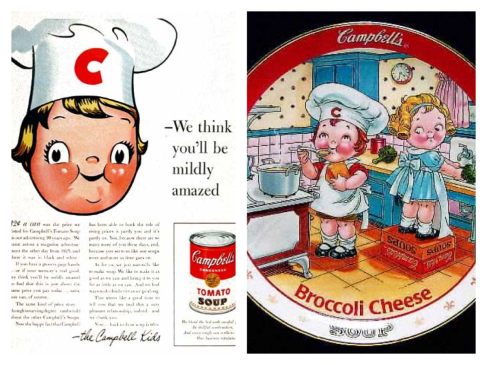
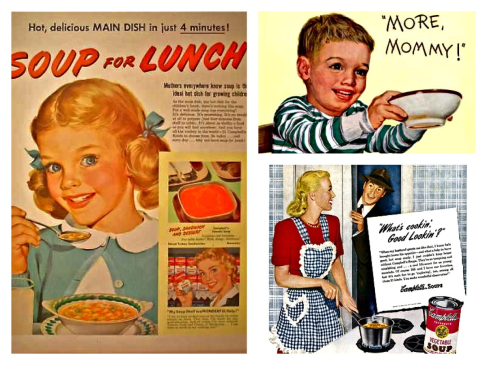
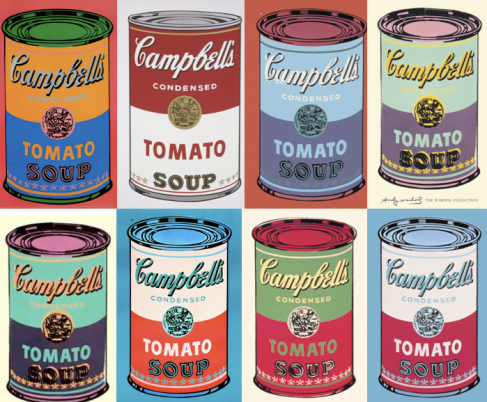
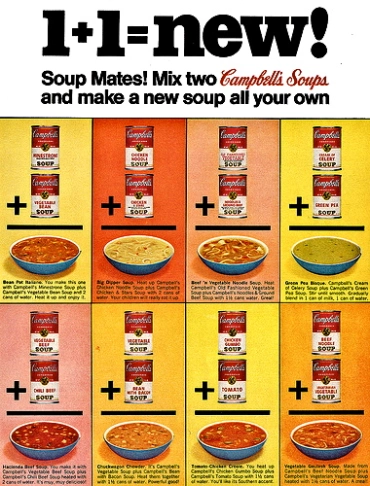
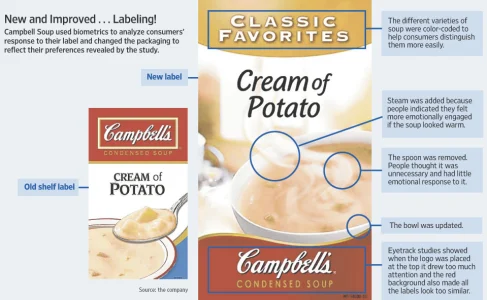
Oh my gosh I’m so obsessed with vintage ad campaigns, this is great! 🙂